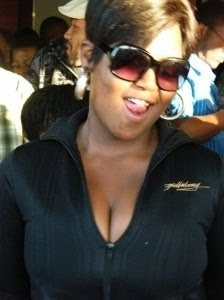


“I wanted to join the church of Satan but a disclaimer on their website says that they don’t accept African applicants,” says Athi-Patra Ruga with a mixture of derision, incredulity and amusement. As he expounds on being rejected by the Prince of Darkness (“I mean, what colour is the soul, really?”), he is engaged in the altogether more prosaic activity of ironing. With less than a week to go before the opening of his fifth solo exhibition, Teeth are the only bones that show... he is – together with two assistants – utilising every available space in his tiny Sea Point studio finishing the intricate tapestries that make up the show. As opposed to any real respect for the tenets of this religion, it is rather his deep interest in mythologies and spiritualities, as well as their attendant rites and rituals that piqued his interest. “I have been attending classes with the South African Theosophical Society ... It’s been quite trippy,” says the 26-year-old as the sounds of 70s Zambian psych-rock band, The Witch, provides an eerie, yet fitting soundtrack. In Teeth..., the first instalment of his Ilulwane Saga, he focuses his attention on the Xhosa rite of passage that is circumcision, using it as a point of departure from which to explore perceptions and mythologies around masculinity. “Ilulwane,” he says, “is a noun for a bat. It is also the word used, more often than not in a derogatory way, to describe a young man has forsaken the traditional rite of passage to manhood and had instead opted for a hospital surgery. These men are labelled ilulwane or ‘one that floats in the night.’” Having killed off his previous character Beiruth (“She jumped – photoshop and all – off a very high cliff,” he quips self-deprecatingly), he created the new character of Ilulwane “as a means of trying to create an argument around the body in penance; moreover the body in passage and transition, by means of probing popular imagery.” This he does by adeptly mixing up images and references as divergent as proudly displayed erect penises, Black Diamonds and their favourite accoutrements, Louis Vitton handbag, and the famous 1976 image of Hector Pieterson (as in the video piece Brutha Elipses Brother. Nightmare.) – all rendered in a camp, aesthetic that is at once both seductive tool and biting social commentary. “The big thing I’m exploring,” he says, “is the covenant men make with ancestry and heritage. I suppose it’s just a reflection of where I’m at now, living in Cape Town and being closer to the Eastern Cape, where I was born and raised.”
Having left Johannesburg two years ago for the relative calm of Cape Town has, aside from influencing his work, also had a positive effect on him personally. Aside from “taking better care of [his] body” it has also been “really humbling as I live closer to my family and am with my partner. It has added a more human element to me which Joburg didn’t – or maybe even couldn’t - really offer me. I’ve become more of a home body which has afforded me more time to actually produce work. It’s funny, but I find that in Joburg there was a constant activity that didn’t necessarily translate into me producing work. It was just, well, busy. Here in Cape Town I find myself more productive.” His views on Cape Town (as published in a recent Art South Africa interview he held with Canadian auteur Bruce La Bruce) have, however, not gone down too favourably among certain sectors. “I got a lot of flak from some conscious types,” he laments. Defending his statement that the image of Cape Town as being more racist than Joburg ‘is a very mean fallacy and just plain jealousy’, he says: “I wasn’t saying that there is no racism in Cape Town - far from it. But at the same token, one can’t say that there’s no racism in Joburg either. Please, there’s exploitation of abantu everywhere.” Then, after a lengthy introspective pause, says: “You know, my issue really is no longer with white folk. There are problems in this black family of ours and we’re at a stage where it doesn’t really matter who caused it. We have to deal with it now. And the first way towards dealing with it is by talking about it. The same goes for the unspoken issues around masculinity and eroticism. Throughout our history, through the dehumanising influences of Christianity, patriarchy and colonialism, the body has been made taboo. The only way to break the taboo is by shining light on it so that we can start reclaiming our bodies and celebrate them.”
Teeth are the only bones that show ... runs until 14 November at Whatiftheworld Gallery.



















